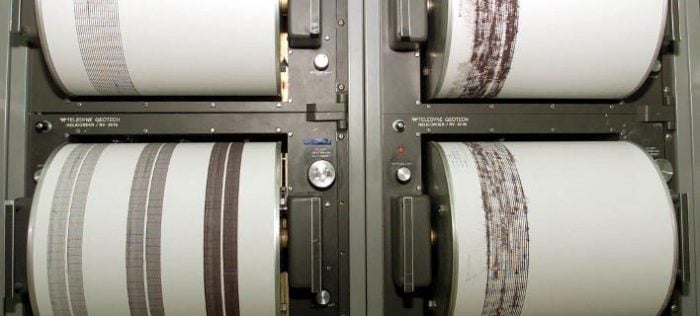
An earthquake of a magnitude of 5.7 struck Crete, the largest island in Greece, on Wednesday, the country’s Geodynamic Institute reports.
There were no immediate reports of injuries or damage.
The quake hit at a moderately shallow depth of 42.7 km (26.5 miles) beneath the epicenter south of the Greek island, at 7:08 am local time.

The European Mediterranean Seismological Center (EMSC) earlier registered the tremor at 6.1. Egyptian authorities reported the quake was felt in some of that country’s cities.
The exact magnitude of the quake might be revised within the next few hours as seismologists review data and refine their calculations, or as other agencies issue their reports.
Akis Tselentis, the director of the Geodynamic Institute, who was in Crete at the time, said authorities gave a revised reading of 5.7 from their earlier estimate of 5.6.
“Thankfully it was in the sea. The area is already burdened (with earlier tremors) and if it were inland there could have been damage,” he said.
Series of earthquakes around Crete
An earthquake measuring 5.2 on the Richter scale hit the sea east of Crete early Sunday evening.
In October, a powerful 6.3 earthquake hit the south of Crete. The quake had a focal depth of 8.2 km (5.09 miles), and its epicenter was southeast of the city of Ierapetra.
It was felt as far as the coast of Turkey and on Cyprus, more than 310 miles to the east, authorities said.
On September 27, one person was killed and several were slightly injured after an earlier, powerful 5.8 earthquake rattled Crete.
Greece is especially earthquake-prone
Greece lies in a highly seismically active region. The vast majority of earthquakes cause no damage or injuries, however.
In October 2020, an earthquake that struck the eastern Greek Aegean island of Samos and the nearby Turkish coast killed two people on Samos and at least 75 people in Turkey.
The country is located in a complex geological boundary zone in the eastern Mediterranean between the African Plate and the Eurasian Plate.
The northern part of Greece lies on the Eurasian Plate while the southern part lies on the Aegean Sea Plate.
The Aegean Sea Plate is moving southwestward with respect to the Eurasian Plate at about 30 mm (1 inch) per year while the African Plate is subducting northward, beneath the Aegean Sea Plate, at a rate of about 40 mm (1.6 inches) per year.
The northern plate boundary is a relatively diffuse divergent boundary while the southern convergent boundary forms the Hellenic Arc.
See all the latest news from Greece and the world at Greekreporter.com. Contact our newsroom to report an update or send your story, photos and videos. Follow GR on Google News and subscribe here to our daily email!



